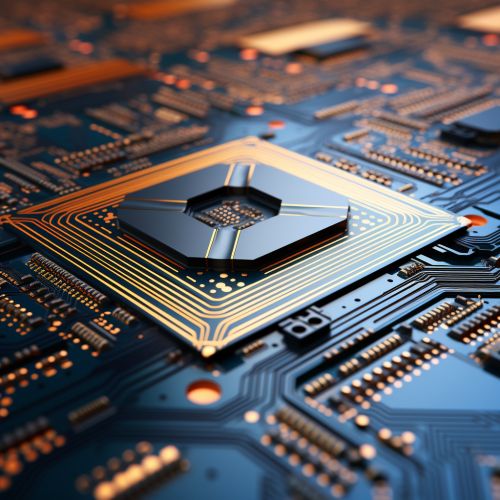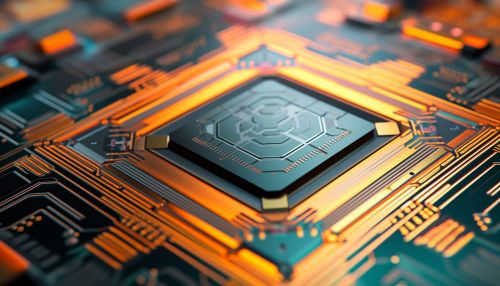Ferroelectric RAM
Overview
Ferroelectric RAM (FeRAM or FRAM) is a type of random access memory that combines the fast read and write access of dynamic RAM (DRAM) with the ability to retain data when power is turned off, a feature known as non-volatility. This is achieved through the use of ferroelectric material, which has the unique property of maintaining a polarized state even in the absence of an external electric field.


History
The concept of ferroelectric RAM was first proposed in the late 20th century, with the first commercial FeRAMs introduced by Ramtron International Corporation in the 1990s. The technology has since been adopted and further developed by several major electronics manufacturers, including Texas Instruments, Fujitsu, and Infineon Technologies.
Structure and Operation
The fundamental building block of a FeRAM cell is a capacitor made of a ferroelectric material, typically lead zirconate titanate (PZT). This material exhibits a spontaneous electric polarization that can be reversed by the application of an external electric field, a property known as ferroelectricity. This allows the FeRAM cell to store a binary '0' or '1' depending on the orientation of the polarization.
The FeRAM cell also includes a transistor that acts as a switch, allowing the cell to be read or written to. When a voltage is applied to the transistor, it allows current to flow through the capacitor, changing the polarization and thus the stored data.
Advantages and Disadvantages
FeRAM offers several advantages over other types of memory. Its non-volatility allows it to retain data without continuous power, making it ideal for applications where data persistence is critical. It also has faster write speeds and lower power consumption than flash memory, and unlike DRAM, it does not require refreshing.
However, FeRAM also has some disadvantages. The process of reading data from a FeRAM cell involves destructively resetting the polarization, requiring the data to be rewritten after each read operation. This can slow down read speeds and increase wear on the memory cells. Additionally, FeRAM currently has a lower storage density and higher cost per bit than other types of memory.
Applications
FeRAM is used in a variety of applications, from consumer electronics to industrial and automotive systems. Its fast write speeds, low power consumption, and non-volatility make it particularly well-suited to applications such as smart cards, digital cameras, and power meters. In the automotive industry, FeRAM is used in event data recorders to store critical data in the event of a crash.
Future Developments
While FeRAM is currently less common than other types of memory, ongoing research and development efforts aim to overcome its limitations and expand its use. For example, new materials and cell structures are being explored to increase storage density and reduce costs. Additionally, the unique properties of ferroelectric materials are being leveraged to develop novel computing architectures, such as ferroelectric field-effect transistors (FeFETs) and ferroelectric tunnel junctions (FTJs).
